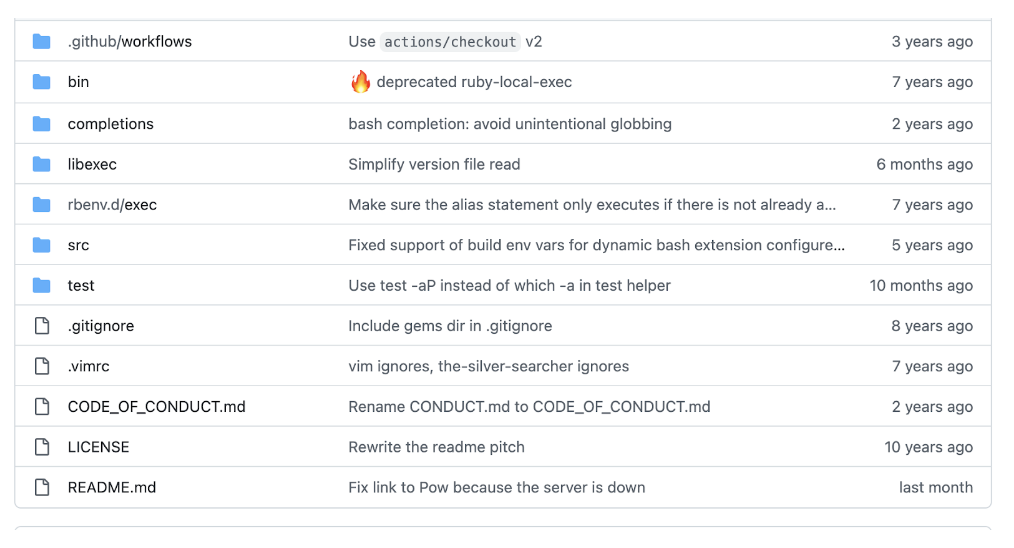Having finished reading the code for RBENV’s shims, we need to decide what’s next.
I see the following directories in the Github repo:

When I look inside each of these directories, I see that libexec/ has the most files in it. While this doesn’t necessarily mean that it’s the most important directory, it does indicate that a lot of development has taken place in that directory. It also means that, if we were to finish reading through all the files in that directory, we will have taken a big step toward understanding the codebase as a whole.
Additionally, the last line in the shim file we just examined was the following:
exec "/usr/local/bin/rbenv" exec "$program" "$@"
This essentially boils down to exec‘ing the /usr/local/bin/rbenv command. The file /usr/local/bin/rbenv is a symlink to /usr/local/Cellar/rbenv/1.2.0/bin, which in turn is just a symlink to /usr/local/Cellar/rbenv/1.2.0/libexec/rbenv:
$ ls -la /usr/local/bin/rbenv
lrwxr-xr-x 1 myusername admin 31 Apr 12 09:44 /usr/local/bin/rbenv -> ../Cellar/rbenv/1.2.0/bin/rbenv
$ ls -la /usr/local/Cellar/rbenv/1.2.0/bin
total 0
drwxr-xr-x 3 myusername admin 96 Sep 29 2021 .
drwxr-xr-x 10 myusername admin 320 Apr 12 09:44 ..
lrwxr-xr-x 1 myusername admin 16 Sep 29 2021 rbenv -> ../libexec/rbenv
$ ls -la /usr/local/Cellar/rbenv/1.2.0/libexec/rbenv
-rwxr-xr-x 1 myusername admin 2901 Apr 12 09:44 /usr/local/Cellar/rbenv/1.2.0/libexec/rbenv
So the libexec/rbenv command would be a logical next step in our analysis. Coincidentally, this is also the first file in the libexec/ directory, so it’s already the file we’d start with if we were to work our way through the files in that directory.
For all of these reasons, I decide to start there.